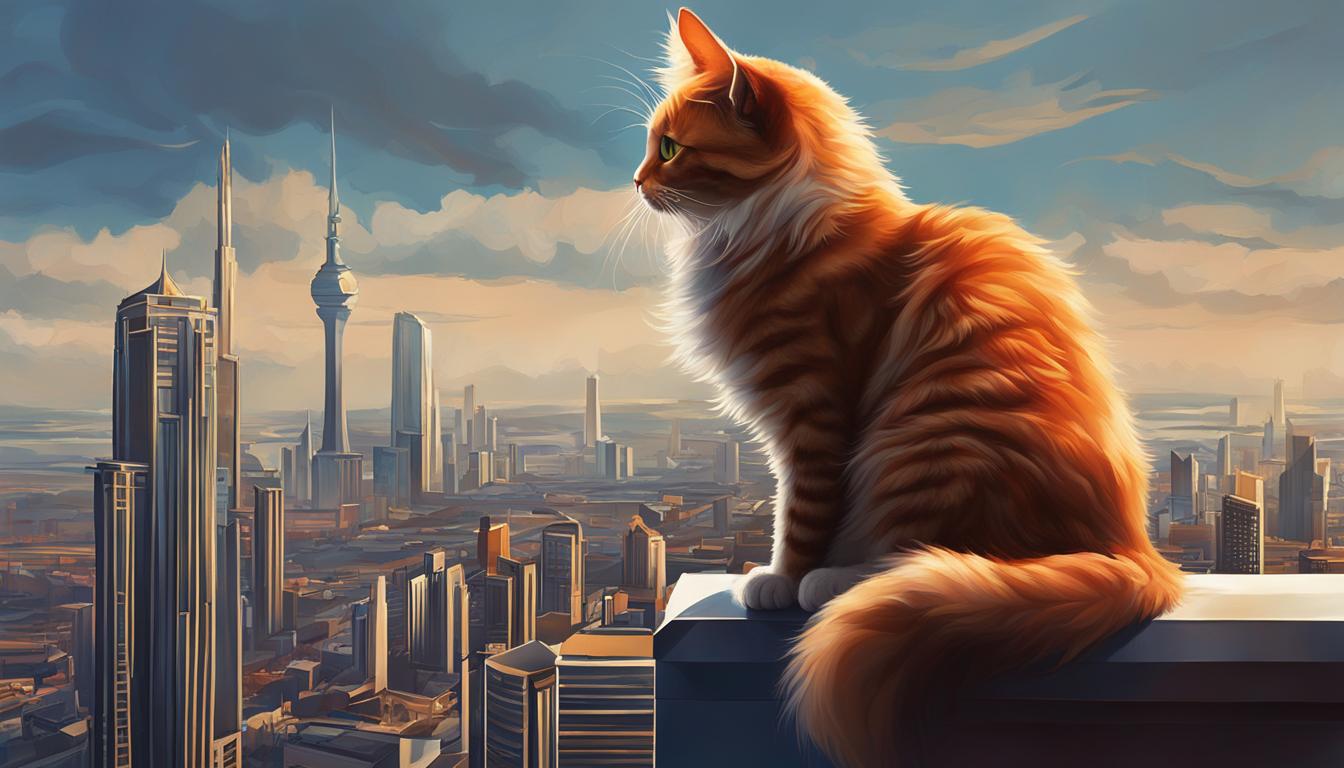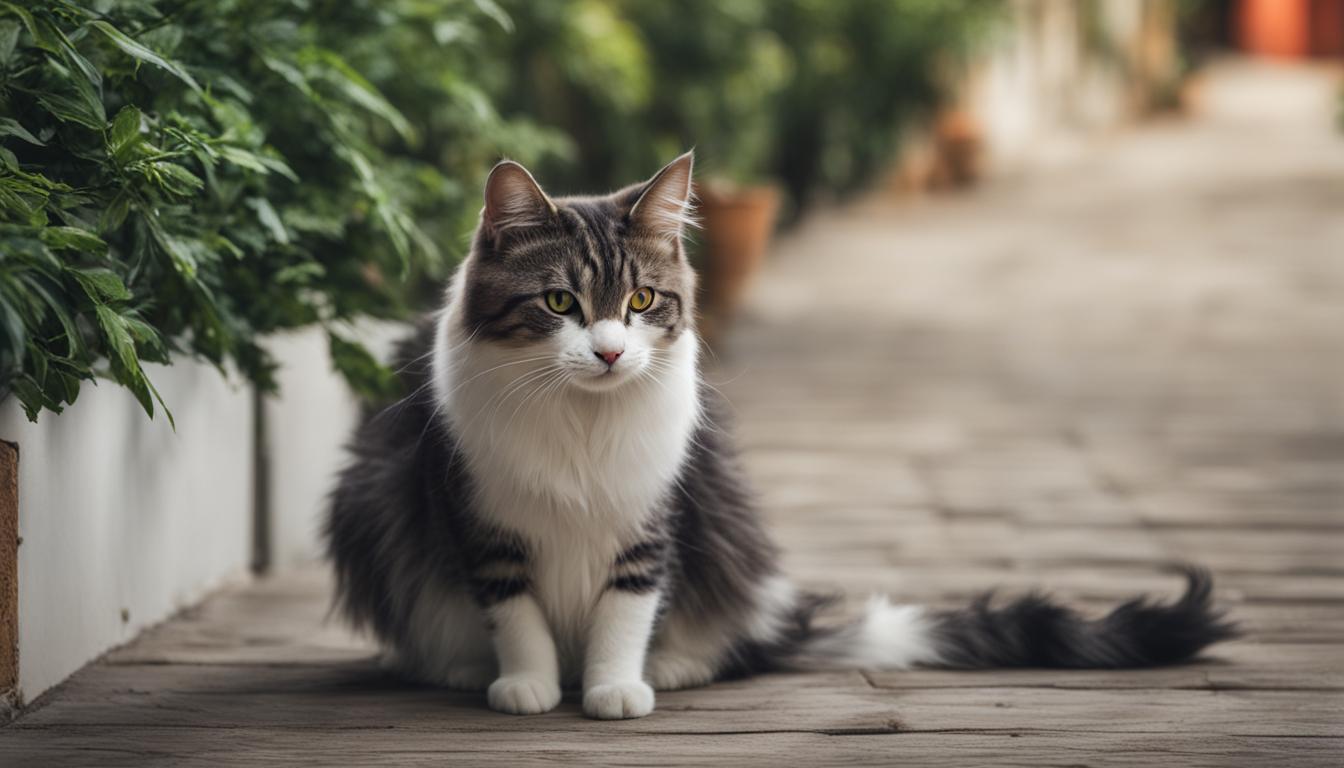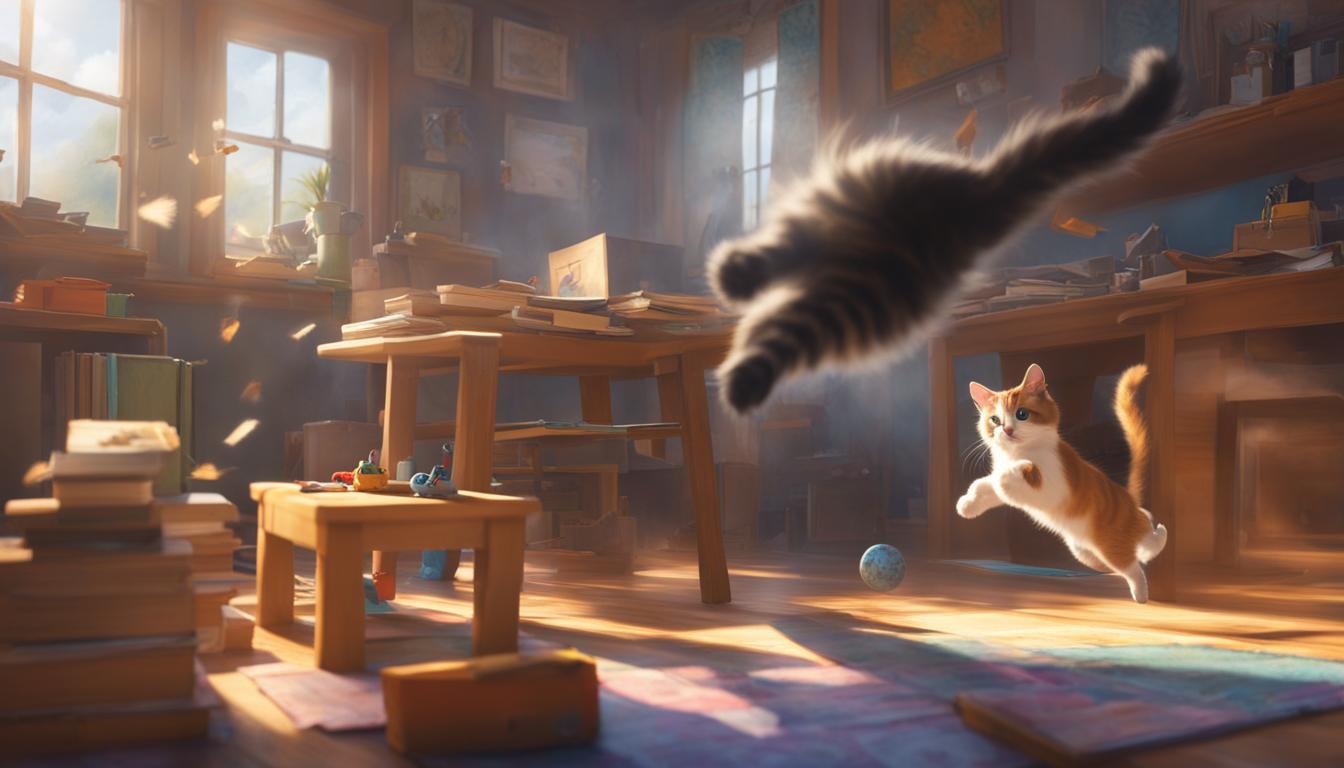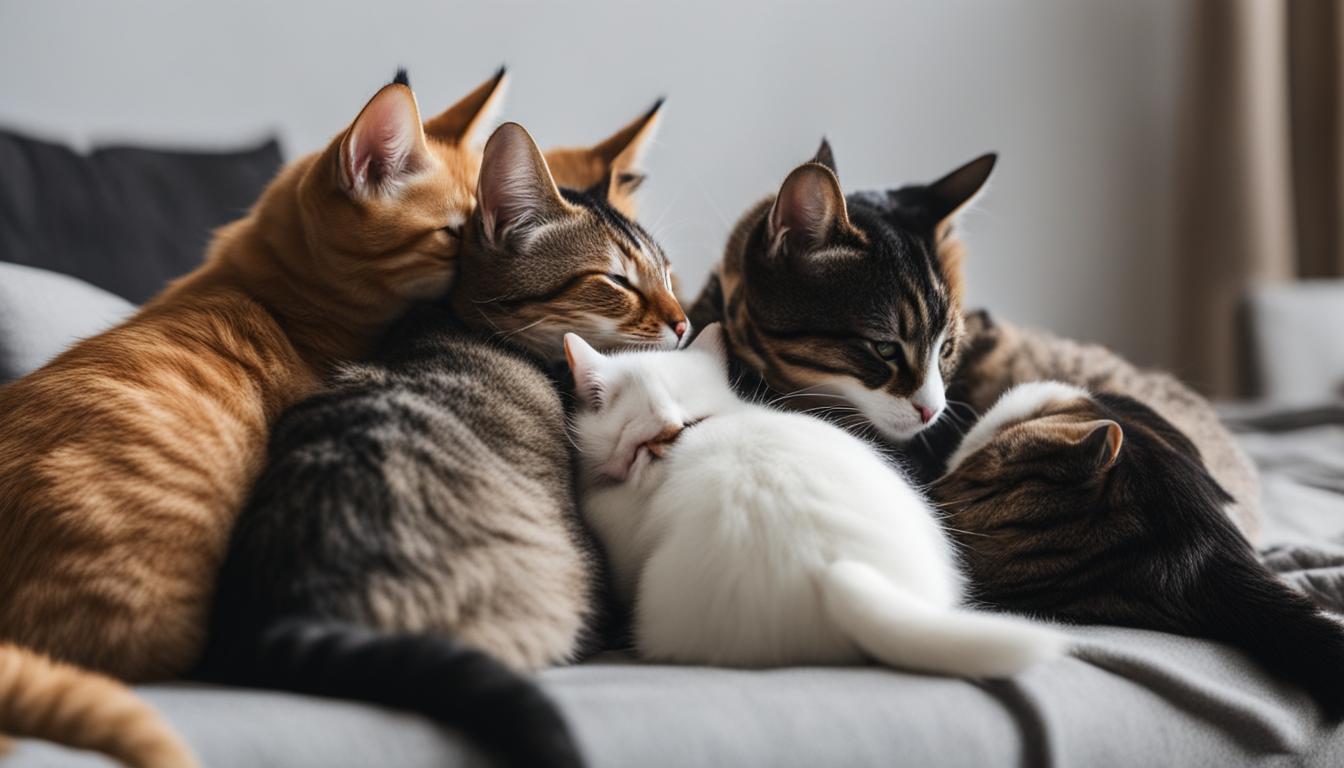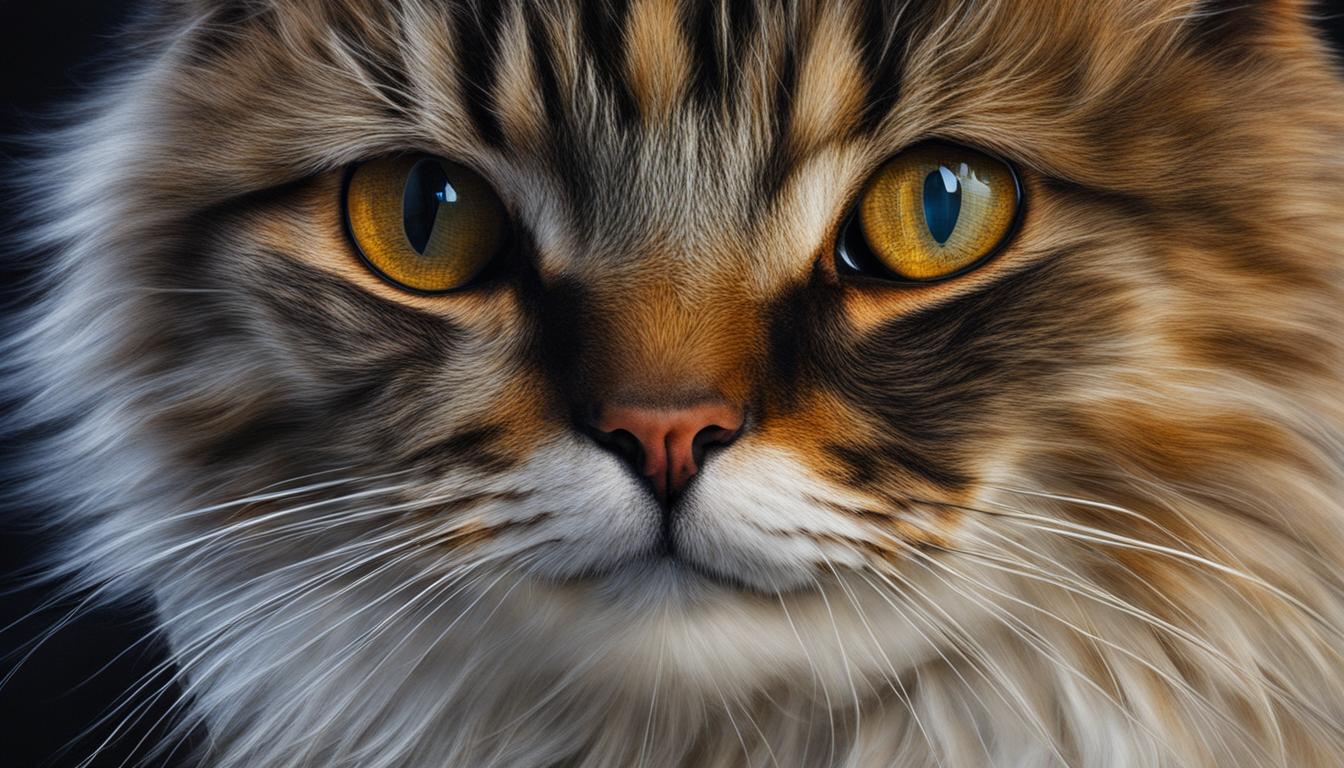Have you ever wondered why your cat just can’t resist scaling the tallest bookshelf or leaping onto the highest perch? As a cat owner, I’ve always been intrigued by their fascination with heights. So, I delved into the depths of feline behavior to uncover the reasons behind this captivating behavior.
It turns out that cats’ love for heights can be attributed to a combination of survival instincts, natural instincts, and psychological needs. Let’s unravel the mystery together!
Key Takeaways:
- Cats’ fascination with heights is rooted in their survival instincts inherited from their wild relatives.
- Climbing and perching in high places allow cats to escape predators and observe their surroundings.
- Cats climb for fun and to keep themselves entertained, especially in smaller living spaces.
- High places provide warmth and privacy for cats, making them irresistible.
- Cats’ love for heights serves practical and psychological purposes, fulfilling their instinctual and emotional needs.
The Safety Concerns of Cats Climbing Heights
Cats’ innate fascination with heights can bring joy and entertainment to their lives, but it also raises safety concerns for pet owners. With their natural agility and curiosity, cats can be fearless explorers, often venturing to precarious high places. As responsible caregivers, it is crucial to take preventative measures to ensure their well-being.
Cat High-Rise Syndrome Prevention:
One major concern for cat owners is the risk of falls from balconies or open windows. Cats’ curiosity can lead them to leap without considering the potential dangers. To protect your feline friend, it is essential to secure open windows or use screens that can withstand the weight and force of a cat’s jump. Additionally, balconies should be made cat-proof by adding sturdy barriers or netting to prevent accidental falls.
“The safety of our furry companions should be our top priority. By taking precautions such as securing windows and balconies, we can create a safe environment for our adventurous cats.” – Dr. Jane Adams, Feline Behavior Specialist
Ensuring Stable Climbing Surfaces:
When cats climb, they rely on stable surfaces to support their weight. Unstable furniture or surfaces prone to collapsing can lead to serious injuries. It is important to invest in sturdy cat trees or shelves that can withstand the climbing antics of your feline friend. Providing secure and stable climbing options will not only keep your cat safe but also minimize the risk of accidents in your home.
Minimizing the Risks of “High-Rise Syndrome”:
“High-Rise Syndrome” refers to cats getting injured from falling from high places. Even though cats have a remarkable ability to right themselves mid-air and land on their feet, falls from significant heights can still result in severe injuries. Minimize the risks by creating a safe climbing environment indoors, with designated high spots and cat-friendly structures. Cat trees, wall-mounted shelves, and perching areas can satisfy your cat’s climbing instincts while reducing the chances of falls and injuries.
| Top Tips for Cat Balcony Safety | Safety Precautions for Open Windows |
|---|---|
|
|
By implementing these safety measures, cat owners can create a secure environment that allows their feline companions to indulge in their natural climbing instincts while minimizing the risks of accidents and injuries.
Cat’s Natural Instincts and Evolutionary Advantage
When it comes to cats and their innate love for heights, it’s more than just a quirk – it’s deeply ingrained in their natural instincts and evolutionary history. Cats are fantastic climbers, a skill they have honed over generations. From their wild relatives to our domestic feline companions, climbing has always been an essential behavior for survival, exploration, and self-expression.
In multi-cat households, the vertical territory becomes a crucial aspect of their social dynamics. Cats use height to establish their personal space and escape potential conflicts with other feline housemates. By providing dedicated high places for each cat, such as cat trees or shelves, we can enhance their quality of life and create a harmonious living environment.
Designing cat-friendly high places not only satisfies their instinctual urge to climb but also keeps them engaged and entertained. Cats are naturally curious and need mental stimulation to prevent boredom and destructive behaviors. By incorporating different climbing surfaces, hiding spots, and perches, we can create a dynamic environment that encourages exercise, exploration, and play.
Benefits of Cat-Friendly High Places:
- Physical exercise and muscle development
- Mental stimulation and stress reduction
- Opportunity for rest and relaxation
- Promotes healthy weight management
- Enhances vertical territory and minimizes conflicts
- Supports natural hunting and observing behaviors
By understanding and embracing cats’ natural instincts, we can create a safe and enriching environment that allows them to express their climbing desires while keeping them happy and healthy. So, let’s invest in some cat-friendly high places and watch our feline friends reach new heights!
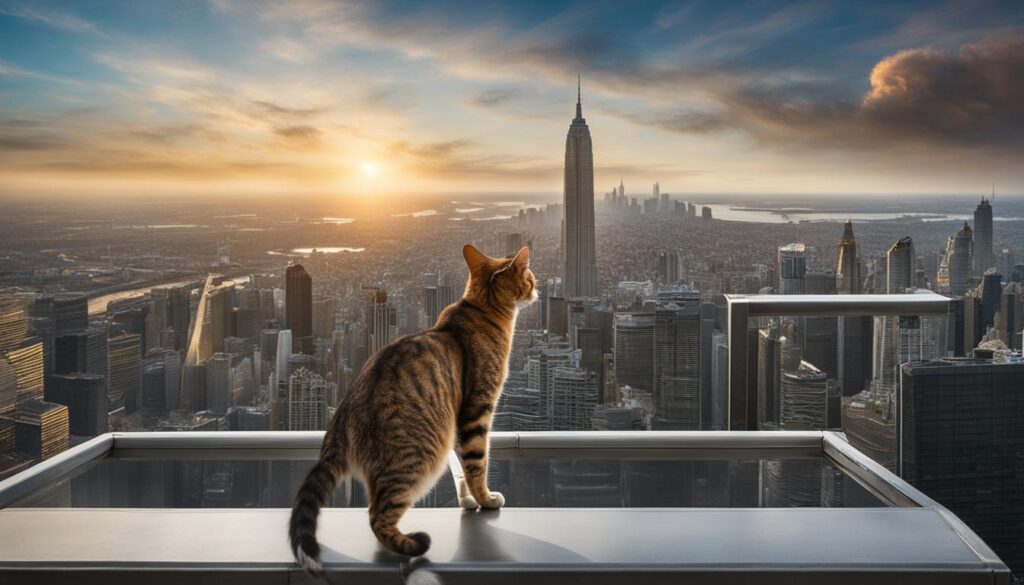
The Cat Righting Reflex: Surviving Falls from Heights
Cats possess an extraordinary ability known as the cat righting reflex, also referred to as the feline parachute. This remarkable instinct allows cats to reorient their bodies mid-air and land on their feet, reducing the risk of injuries from falls. The cat righting reflex is a result of physiological adaptations that enable cats to twist and turn their bodies, along with a highly developed vestibular apparatus in their inner ear that helps them maintain balance.
When a cat falls from a height, it starts by rotating its head to face downwards. This action triggers a series of coordinated movements, as the cat arches its back and extends its legs, making its body resemble a parachute. The flexible skeletal structure of cats allows them to twist and manipulate their bodies, adjusting their position and minimizing the impact upon landing.
“The cat righting reflex is a testament to the remarkable agility and adaptability of these feline creatures.”
While the cat righting reflex increases the chances of survival, it is important to note that cats can still sustain injuries from falls, especially when falling from great heights. Common injuries include broken bones, fractures, and internal trauma. Therefore, it is crucial to seek immediate veterinary attention for any cat that has experienced a fall, as prompt medical intervention can significantly improve the cat’s chances of a full recovery.
Overall, the cat righting reflex serves as a fascinating example of nature’s ingenious design. It enables cats to have a higher likelihood of survival in the event of falls from heights, showcasing their resilience and adaptive capabilities.
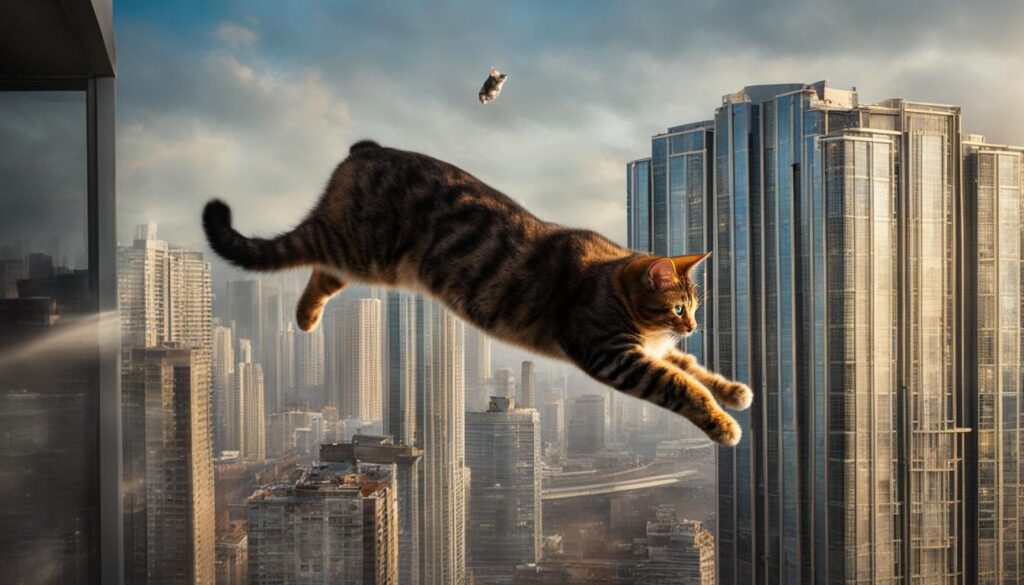
The Cat Righting Reflex: Key Points
To summarize, the cat righting reflex is:
- An instinctual response that allows cats to reorient their bodies mid-air and land on their feet.
- A result of physiological adaptations, including a flexible skeletal structure and a highly developed vestibular apparatus in their inner ear.
- Cats can still sustain injuries from falls, such as broken bones and internal trauma.
- Immediate veterinary attention is crucial to assess and address potential injuries after a fall.
Table: Survival Rates of Cats Falling from Heights
| Fall Height | Survival Rate |
|---|---|
| Up to 2 stories | 25% |
| 2 to 6 stories | 75% |
| 6 stories or more | 90% |
Understanding High-Rise Syndrome and Cat Fall Survival Rates
Cats’ fascination with heights can sometimes lead to dangerous situations, resulting in falls from high-rise buildings. This phenomenon, known as High-Rise Syndrome, has been the subject of study to understand cat fall survival rates and the injuries they sustain. Surprisingly, research has shown that cats falling from lower floors tend to suffer greater injuries than those falling from higher floors.
A study conducted by Dr. Peter P. Egan of Cornell University College of Veterinary Medicine analyzed cat falls from various heights. It revealed that cats falling from six stories or above had a higher survival rate of approximately 90% when they received prompt medical attention. The study further emphasized the importance of seeking immediate veterinary care after a fall, regardless of the fall height, as cats can sustain significant injuries such as fractures and internal trauma.
“The survival rate for cats falling from heights of six stories or more is approximately 90% when they receive prompt medical attention.” – Dr. Peter P. Egan, Cornell University College of Veterinary Medicine
While the exact reasons for the difference in survival rates between lower and higher falls are not fully understood, there are several theories. It is believed that cats falling from higher floors have more time to twist their bodies and land in a position that minimizes the impact. Additionally, the longer fall allows cats to reach their maximum righting reflex potential, increasing the chances of a successful landing.
| Fall Height | Survival Rate |
|---|---|
| 1-5 stories | Less than 10% |
| 6 stories and above | Approximately 90% |
This table illustrates the significant difference in survival rates between cats falling from different heights. It is crucial for cat owners to be aware of the risks associated with high-rise syndrome and to take preventive measures to ensure the safety of their feline companions.
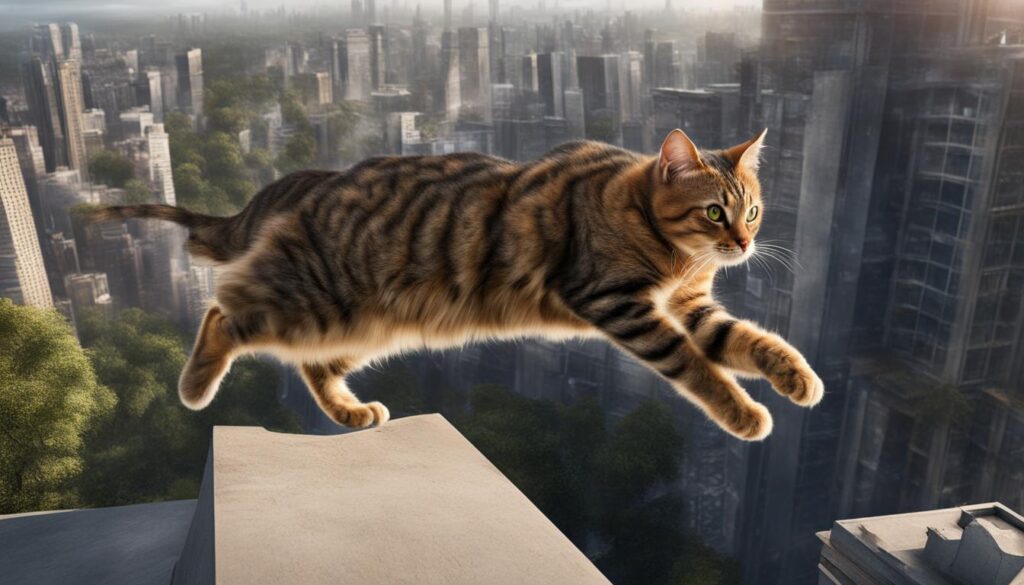
Cat Fall Research and Feline Adaptations
When it comes to understanding cat fall research and feline adaptations, we get a glimpse into the incredible abilities of our feline friends. Cats have long been known for their agility and grace, especially when it comes to navigating heights. Researchers have delved into the science behind their ability to survive falls and have made remarkable discoveries that have influenced not only our understanding of cats but also advancements in science and engineering.
Through rigorous study and observation, scientists have unraveled the secrets of the cat righting reflex, a natural instinct that allows cats to twist and turn their bodies mid-air, landing safely on their feet. This reflex is a result of various physiological adaptations, such as their flexible skeletal structure and a highly developed vestibular apparatus in their inner ear, enabling them to maintain balance during a fall. The research into feline adaptations has not only fascinated animal behaviorists but has also served as inspiration for advancements in human safety measures.
One notable application of cat fall research is the development of protective gear for extreme sports enthusiasts. Drawing inspiration from cats’ natural ability to survive falls, engineers have designed innovative safety equipment to minimize injuries in high-risk activities. Airbag systems, harnesses, and helmets have all been influenced by the study of feline adaptations. By understanding how cats perceive their surroundings during a fall and make split-second decisions to ensure their safe landing, scientists and engineers have been able to enhance safety protocols and design protective gear that can save lives.
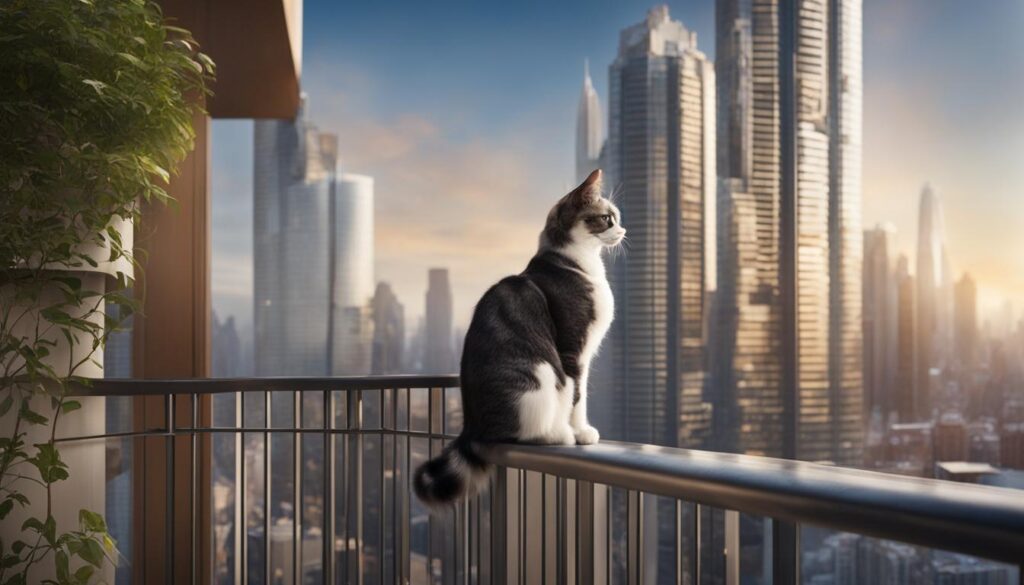
The Implications of Cat Fall Research
“Cats have an incredible knack for surviving falls, and their adaptations have inspired advancements in safety measures for humans.”
In addition to safety gear, cat fall research has also influenced the field of architecture and urban design. By studying how cats navigate heights, designers have gained insights into creating safer spaces and structures for both feline and human occupants. The knowledge gained from cat fall research has led to the implementation of features such as secure balconies and windows, preventing falls and ensuring the well-being of our furry companions.
| Feline Adaptations | Applications |
|---|---|
| Flexible skeletal structure | Development of impact-resistant materials |
| Highly developed vestibular apparatus | Inspiration for improved balance and stability in engineering |
| Acute reflexes and coordination | Advancements in robotics and motion control |
By continuously researching cat falls and their incredible survival abilities, we not only gain a deeper understanding of our feline companions but also find inspiration to enhance safety measures, design cat-friendly spaces, and improve our overall well-being. The world of cat fall research has truly opened doors to exciting advancements and continues to be an area of study that fascinates and captivates in more ways than one.
Conclusion
As I wrap up this fascinating journey into the world of cats and their love for heights, it’s clear that their climbing behavior is deeply rooted in their instincts and evolutionary advantages. From escaping predators to establishing vertical territory, cats have compelling reasons to seek high spots in our homes.
But as responsible cat owners, we must strike a balance between fostering their natural instincts and ensuring their safety. Providing designated climbing options like cat trees or shelves can not only satisfy their climbing needs but also keep them entertained and engaged. Remember to secure open windows and screens, and ensure the stability of furniture they love to scale.
While cats possess a remarkable ability to survive falls from heights, it is essential to seek immediate veterinary attention if an accident occurs. Even though they may seem fine, potential injuries can lurk beneath the surface. By prioritizing cat safety and addressing any falls promptly, we can ensure the well-being of our feline companions.
So, let’s embrace their love for heights and create a stimulating environment while taking necessary precautions. With a thoughtful approach, we can nurture their climbing instincts, provide a secure space, and watch them thrive in their elevated playground.
FAQ
Why do cats love heights?
Cats’ fascination with heights can be attributed to several reasons. It is a survival instinct inherited from their wild relatives, allowing them to escape from predators and observe their surroundings. Cats also climb for fun and to keep themselves entertained, especially in smaller living spaces. High spots provide warmth and alone time for cats.
How can I ensure my cat’s safety when climbing heights?
Safety precautions must be taken to ensure your cat’s well-being. Secure open windows or screens to prevent falls. Provide stable furniture or surfaces that cats can climb on. Be aware of “high-rise syndrome” and make sure your climbing environment is safe to minimize the risks of accidents.
Why do cats need high places?
Cats need high places to establish vertical territory, especially in multi-cat households. Climbing allows them to find their own space and escape potential conflicts. High places also give them an advantage in hunting and observing their surroundings.
How do cats survive falls from heights?
Cats have a natural instinct called the cat righting reflex or feline parachute. This reflex allows them to quickly reorient their bodies mid-air and land on their feet. Cats have physiological adaptations, such as a flexible skeletal structure and a highly developed vestibular apparatus, that help them maintain balance.
What is high-rise syndrome?
High-rise syndrome refers to cats falling from high-rise buildings. Surprisingly, cats falling from lower floors tend to suffer greater injuries than those falling from higher floors. The survival rate is approximately 90% when cats receive prompt medical attention after a fall.
How has cat fall research influenced advancements in science and engineering?
Research on cat falls and the cat righting reflex has influenced advancements in safety measures for humans. The study of feline adaptations has led to the development of airbag systems and protective gear for extreme sports enthusiasts. Cats’ ability to survive falls has inspired improvements in safety protocols and technologies.
How can I provide a safe climbing environment for my cat?
Understanding the reasons behind cats’ love for heights allows you to create a safe climbing environment. Provide designated climbing options such as cat trees or climbing posts. Ensure the safety of high spots in the house and prioritize your cat’s climbing instincts while ensuring their safety.

